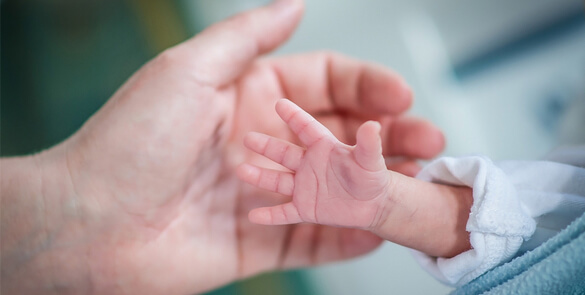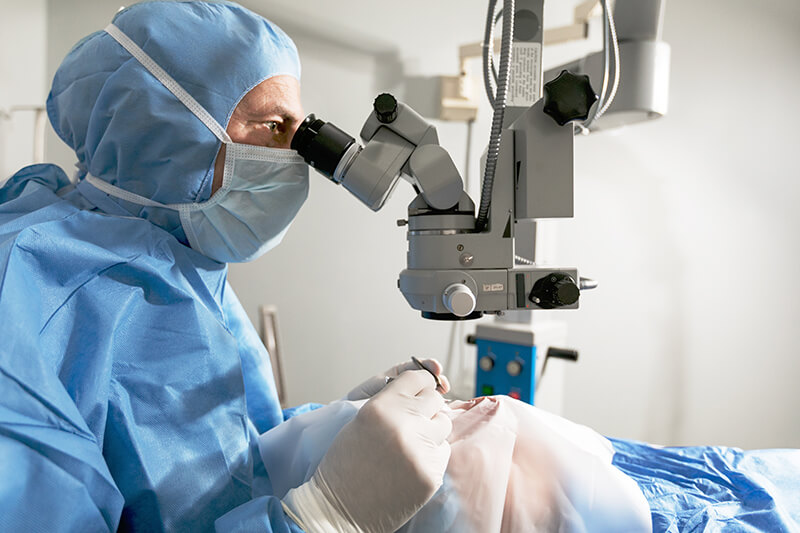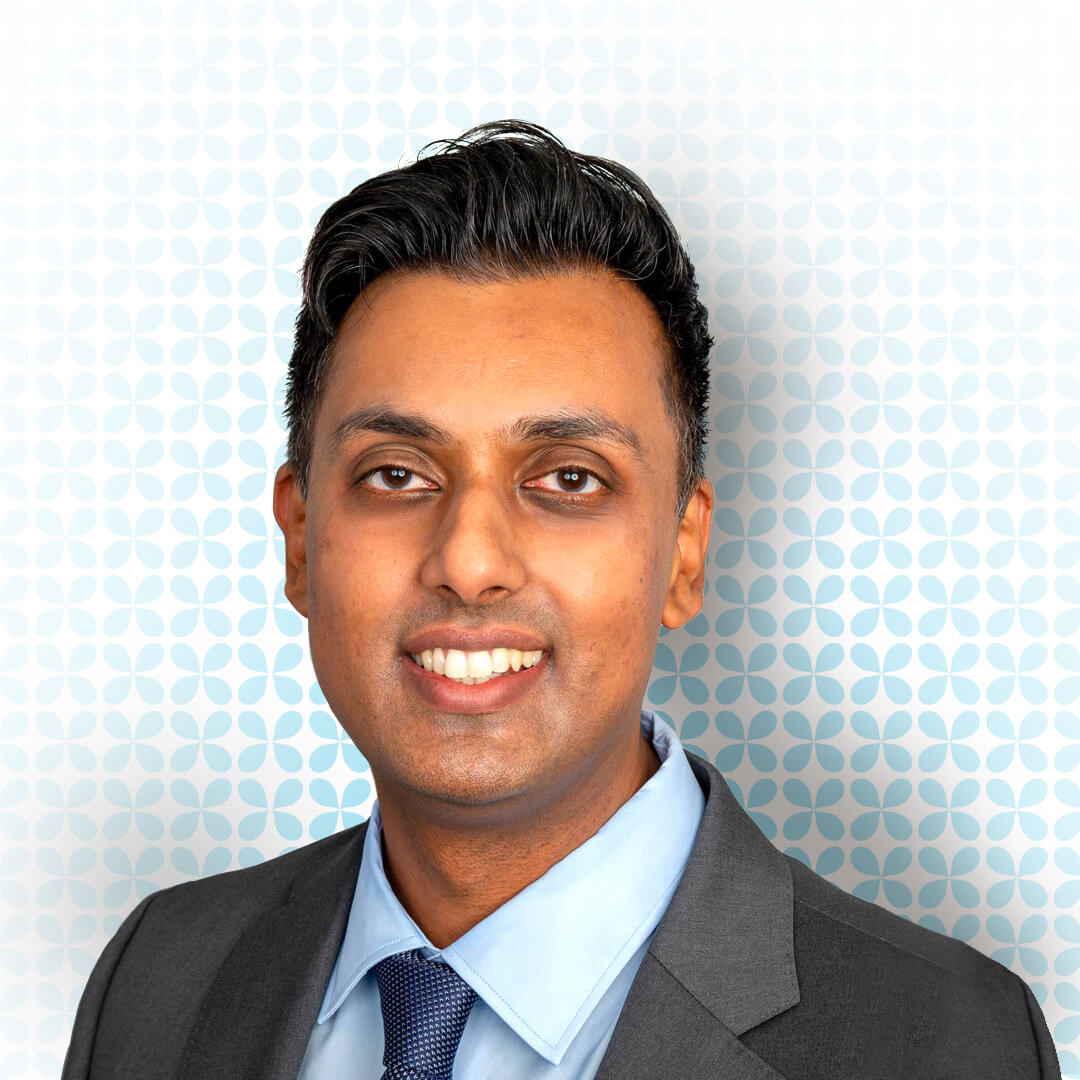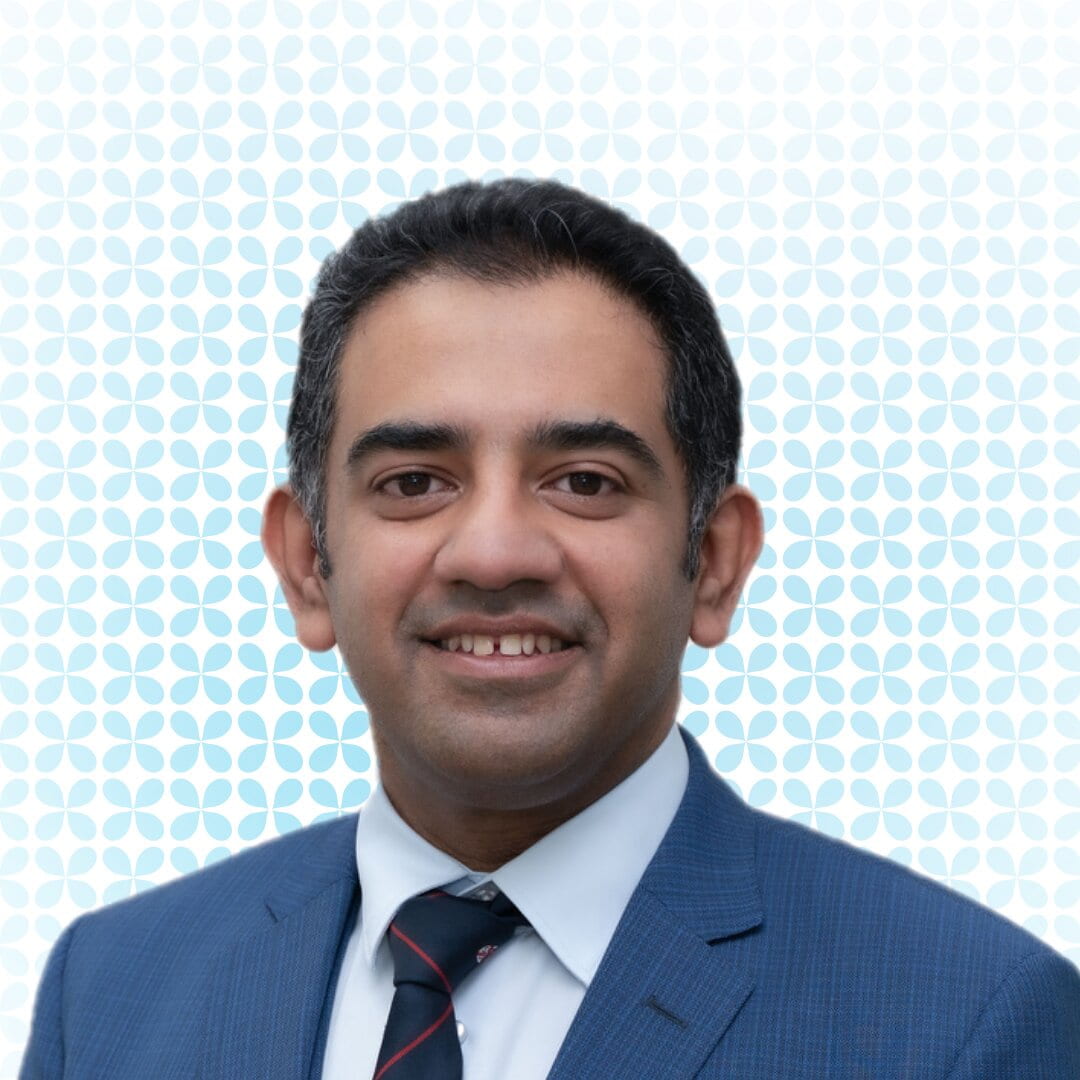About Retinopathy of Prematurity (ROP)
Retinopathy of Prematurity (also called ROP) is an eye disease that affects many premature babies. ROP happens when a baby’s retina doesn’t fully develop in the weeks after birth. As a consequence of premature birth, abnormal blood vessels are formed, which are fragile and can leak, scarring the retina and pulling it out of position. This causes a retinal detachment, which is the main cause of visual impairment and blindness in ROP. Some cases of ROP are mild and correct themselves, however, others require surgery to prevent vision loss or blindness. Surgery involves using a laser or other means to stop the growth of the abnormal blood vessels, making sure they don’t pull on the retina. As ROP has no signs or symptoms, the only way to detect it is through an eye examination by an ophthalmologist.


Classification of ROP
ROP is categorized based on the severity of the disease into –
- Stages (0-5)
- Location of the disease into 3 zones (1-3)
- Extent of the disease based on clock hours (1-12)
- The presence of plus disease.
Risk Factors
Birth weight and gestational age
Infants with very low birth weight are at significantly higher risk of developing severe ROP that requires treatment. Similarly, the severity of ROP is generally inversely proportional to gestational age.
Oxygen Use
Although the exact relationship between oxygen therapy and ROP is currently not well established, oxygen therapy seems to play an important role in the pathogenesis of ROP. Strict management of oxygen delivery without fluctuations and monitoring may be associated with decreased occurrence of ROP.
Examination
All babies less than 32 weeks gestational age (up to 31 weeks and 6 days) or less than 1501g birth weight should be screened for ROP. The exact time at which they are screened will depend on a child’s gestation age and/or birth weight. The period of time between the screenings depends on the findings of the first screening. This will all be discussed with your Paediatric Ophthalmologist.
The screening involves the pupils (black part of the eye) being dilated with eye drops to allow a full view of the retina (back of the eye). The Paediatric Ophthalmologist will then look inside the babies’ eyes with appropriate magnification instruments; they may also take pictures of the back of the eye.
Screening can be stopped when a baby is no longer at risk of sight threatening ROP.
The goal of ROP surgery is to stop the growth of abnormal blood vessels by focusing treatment on the peripheral retina (the sides of the retina) to preserve the central retina (the most important part of the retina). ROP surgery involves scarring areas on the peripheral retina to stop the abnormal growth and eliminate pulling on the retina.
The decision to treat will be based on the clinical findings such as degree of ROP (stage, zone and presence of plus), rate of ROP progression, birth weight, gestational age and ethnicity.
Timing
When indicated, treatment should be carried out as soon as possible, ideally within 2-3 days of the diagnosis. The rational is that the disease can advance rapidly and any delay in treatment will reduce the chances of success.
Anaesthesia
ROP surgery is typically performed either under general anaesthesia (medication that keeps the patient in a deep sleep-like state) or deep sedation (medication that makes the patient unaware of the procedure but not as deeply sedated as general anaesthesia).
Types of Treatment
Laser therapy
Laser photocoagulation therapy uses small laser beams to scar the peripheral retina. This is the procedure of choice, being less invasive, less traumatic to the eye and causes less discomfort to the infant. Laser is also simpler to apply in treating posteriorly located disease.
Complications of laser therapy include –
- burns in cornea and iris
- cataract
- retinal and vitreous haemorrhage
Cryotherapy
Cryotherapy uses freezing temperatures to scar the peripheral retina. This has been largely superseded by laser due to its higher incidence of treatment related complications.
Complications of cryotherapy include –
- eyelid edema
- laceration of the conjunctiva
- pre-retinal and vitreous hemorrhage
- systemic complications like bradycardia, cyanosis and respiratory depression
Anti- VEGF
Antivascular endothelial growth factor (VEGF) agents, which pharmacologically modify the course of this pathologic retinal vascularization can also be used to treat ROP.
Complications of anti-VEGF include –
- retinal detachment
- cataract
- endophthalmitis
- contraction of ROP-associated vitreoretinal proliferations
Vitreoretinal surgery
In advanced ROP treatments include –
Scleral buckling – can be used, this involves placing a flexible band, usually made of silicone, around the circumference of the eye. The band is placed around the sclera, or the white of the eye, causing it to push in, or “buckle.” This, in turn, causes the torn retina to push closer to and remain against the outer wall of the eye.
Vitrectomy – a complex surgery that involves replacing the vitreous, or the clear gel in the centre of the eye, with a saline (salt) solution. Removing the vitreous allows for the removal of scar tissue and eases pull on the retina. This stops the retina from pulling away.
After the Procedure
If admission to the hospital isn’t necessary, you’ll be able to take your child home about an hour after the procedure. Follow-up care for ROP surgery includes giving your child eye drops (to prevent infection) for at least a week.
To make sure the eyes are healing properly and that ROP hasn’t returned, eye exams should be scheduled based on instructions from the ophthalmologist. This is usually every 1-2 weeks.
Risks and Complications
The goal of surgery for retinopathy of prematurity is to stop the progression of the disease and prevent blindness. Although ROP surgery has a good success rate, not all babies respond to treatment. Up to 25% of babies who have ROP surgery might still lose some or all vision.
In some cases, laser surgery or cryotherapy isn’t successful (meaning the abnormal blood vessels continue growing) and might have to be repeated. If the growth continues, scleral buckling or vitrectomy might have to be attempted. However, it’s important to know that surgery for advanced stages of ROP doesn’t guarantee that the retina will re-attach and sight will be restored.
Keep in mind that for all types of ROP surgery, a degree of your child’s peripheral (side) vision will be lost. And even if the ROP has stopped progressing, vision can still be affected in the following ways:
- Strabismus: the eyes aren’t aligned correctly
- Amblyopia: one eye is weaker than the other (sometimes called “lazy eye”)
- Myopia: short-sightedness or difficulty seeing distant objects
- Glaucoma: increased pressure on the eye that can damage the optic nerve and cause vision loss or blindness
- Retinal detachment: the retina detaches from the eye, causing vision loss or blindness
Since some vision loss and complications can occur, any child that has had ROP surgery should have regular, yearly eye exams well into adulthood.
If you have any further concerns or questions regarding your child’s eye condition or their treatment please contact us on: [email protected]
Request an Appointment



